
views
Overwintering Calla Lilies Indoors

Consider removing your Calla bulbs from the soil to overwinter them indoors. Calla lily bulbs prefer a warm climate. If you live in a colder climate but have Callas growing in the garden, consider removing your Calla rhizomes, or bulbs, over the winter to give them a better chance of survival. To do this: Wait until just after the first frost. Cut the withered foliage back to three inches above ground level.
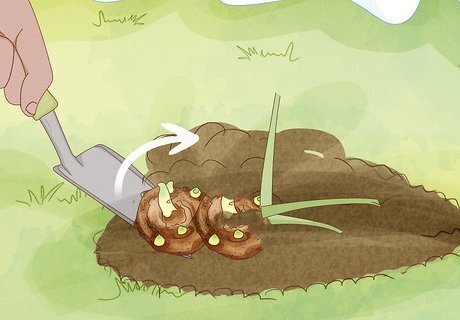
Dig up your bulb. Carefully dig out your Calla rhizome. It contains all the essential nutrients that help calla lily to survive the winter, so you’ll want to preserve this vital part. Be sure to dig a much wider hole than you think you need to. Doing this will help you avoid damaging the bulb with your spade.

Remove the soil from the bulb. Gently dislodge as much soil as you can from the healthy bulbs without damaging the roots. Cut off the dead foliage, leaving about a 2-inch length of dead leaves on the rhizome. Rinse the bulbs under cool running water (such as the water from a garden hose) to remove the rest of the soil.
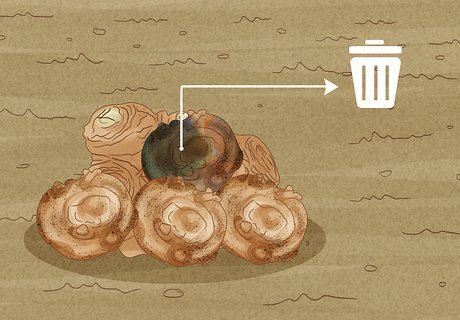
Check your rhizomes carefully for rot or any signs of disease. It isn't worth keeping any rhizomes that are diseased or damaged. Throw these out with the trash. Avoid composting diseased plant matter as doing so can spread infection the infection to other plants.
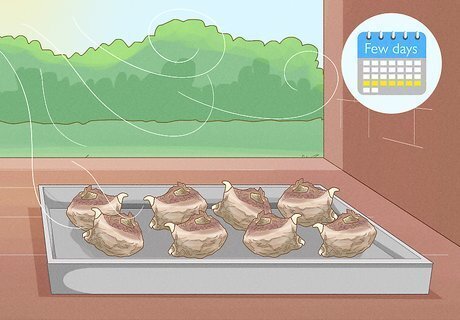
Put the rhizomes on a tray and allow them to dry for a few days. They should be well spaced to allow air to circulate between them. A cool dark place such as a garden shed or garage is suitable. It may be better to avoid bringing them into a heated home as the heat may be a shock that could cause mold to form on your bulbs. 60 to 70 degrees F is an ideal temperature for rhizome storage. It should not be less than 50 degrees Fahrenheit (10 degrees Celsius). Try not to let them be exposed to sunlight.
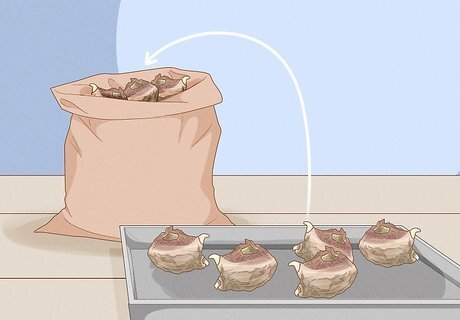
Put your rhizomes into paper bags. After they have dried out for a few days, wrap the rhizomes in newspapers or paper bags. Put a small amount of dry peat moss or vermiculite inside. Putting the moss or vermiculite in the bag will help to prevent one bulb from infecting another if it develops mold. You can also use a cardboard box if you make some ventilation holes to let air circulate. Avoid letting the bulbs touch each other and put moss or vermiculite between them.

Try to keep your rhizomes dry. Damp and rot are the biggest threats to overwintering rhizomes, so try to keep them dry where possible and store them in a dark, dry place. They should not dry out completely however. If the bulbs appear dry or shrunken, a light mist with a water spray should prevent them from drying out too much.

Give your rhizomes time to recover before you replant them. Callas need to rest for a few months before growing again. Try to plant them in mid or late spring once the threat of frost has passed and the ground is warmer. Your Calla is more at risk of rotting because of the winter rain rather than the frost so avoid planting if the ground if waterlogged, even if the weather is mild.
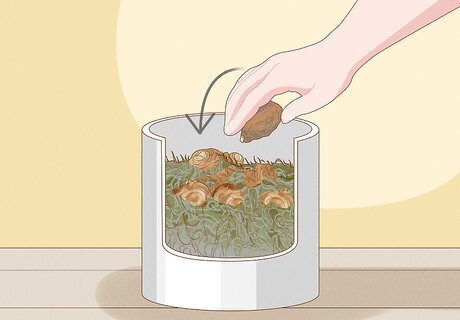
Consider keeping your Calla in a pot. You can plant a Calla lily outside in a container and move it inside for the winter. When planting, use decent-quality compost and make sure the container has good drainage holes. Plant the rhizomes with the eyes upwards so that they are just visible in the soil. Once flowering ends, give the pot a feed with a potassium-rich fertilizer (one suitable for tomatoes will do). After that, cease watering your container-grown Calla lily and move the pot to a cool dark area once the foliage withers away. A dark corner of a garden shed is suitable. Don't water your plant again for three months and avoid cutting the foliage until it has withered away.
Overwintering Calla Lilies Outside
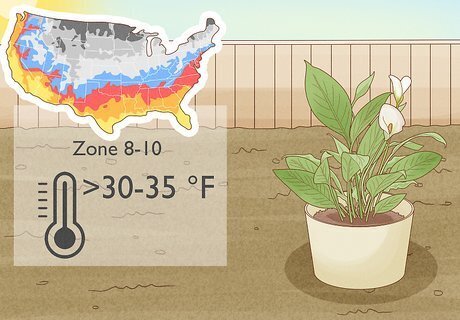
Consider keeping your Callas outside if you live in a mild climate. Calla Lilies will survive outdoors over winter in mild climates that don't experience much sustained snow, deep freezes and heavy prolonged rainfall in the colder months. They can generally cope outdoors through winter in zones 8 through 10. This means that they can survive in temperatures that do not drop below 30 to 35 degrees F (-1.1 to 1.7 degrees C).

Help your plant to die back. After flowering has ended, refrain from watering and allow the plant to die back. Try to refrain from cutting the foliage until it has withered away.

Give your Callas some protection. If you are overwintering outdoors, apply a mulch of about four inches of straw or evergreen branches. You can also put them under an upturned pot or cloche. Do this in the fall before the ground gets cold.
Replanting Overwintered Callas
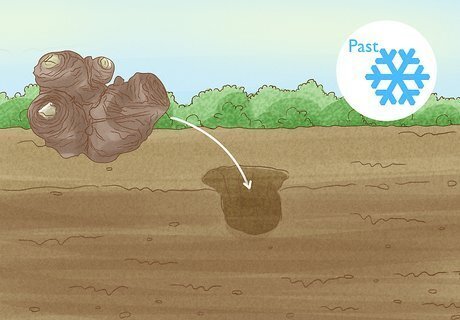
Do not plant your Calla lily until you are sure there will not be any more frost. Wait until all threat of frost has passed and the soil has had a chance to heat up a little before planting the rhizomes outside again. Mid-spring is usually a good time to move them outside again.
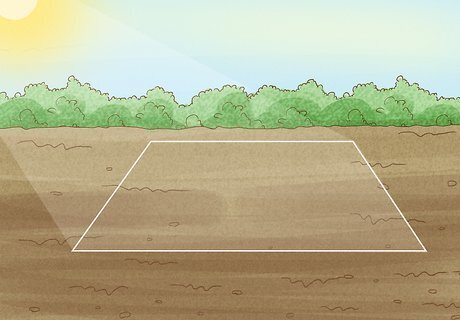
Choose a well-drained spot in a sunny position. Keep in mind that if you can't find a super sunny spot, Callas will tolerate shade for part of the day. It's a good idea to incorporate some well-rotted manure or compost into the soil to improve it ahead of planting. A rich soil will help the plant produce flowers.
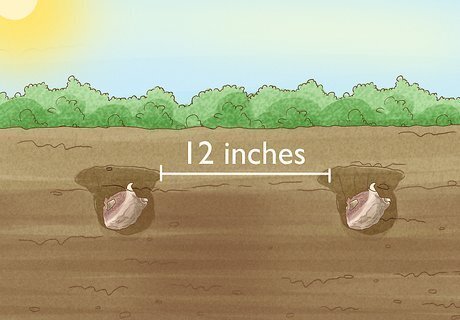
Plant your rhizome correctly. The rhizome should be planted with the 'eyes' facing upward and just visible at the top of the soil. These are the growing points that look like the 'eyes' on a potato. Leave about 12 inches (30.5 cm) of space between each of your rhizomes. Once they are in the ground, give them a good soaking and then continue to keep the soil moist but not waterlogged as they grow.
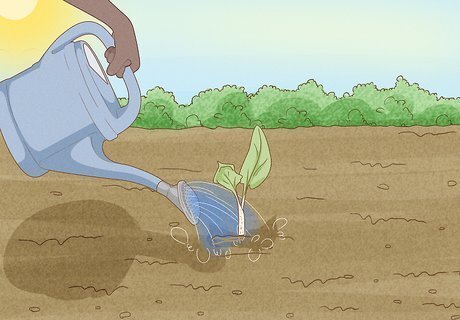
Water your Calla lilies. Calla Lilies require water throughout the summer. If you dig them up for overwintering indoors, they will need extra water as they get established back in the ground. Remember to feed fortnightly during the growing period—a water-soluble fertilizer added to the watering can is ideal—but stop feeding ground-planted Calla lilies once flowering begins. Continue feeding container-grown Callas throughout the flowering period.

Watch out for pests. Callas are generally trouble-free but can suffer from pest attacks by aphids or whiteflies. Keep an eye out for pests and spray as required with an all-purpose bug spray.



















Comments
0 comment